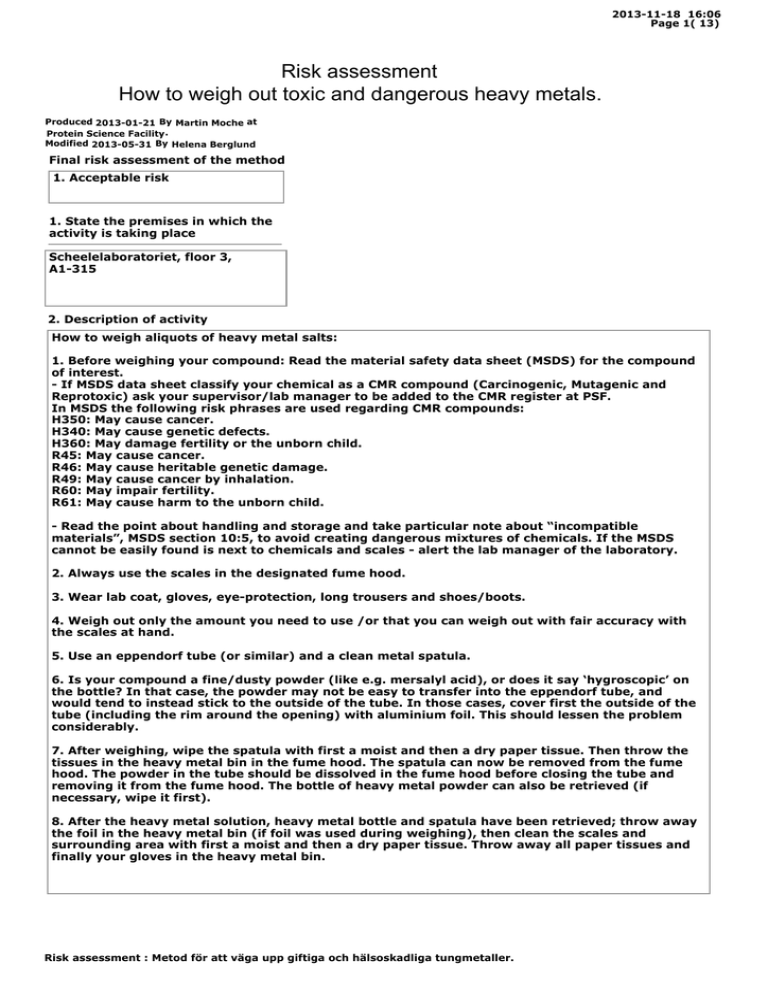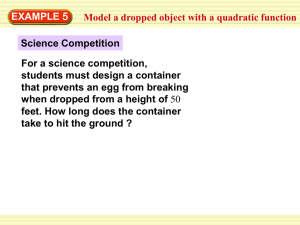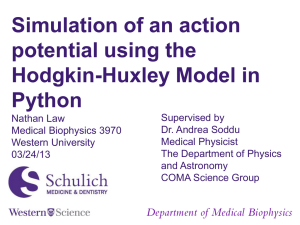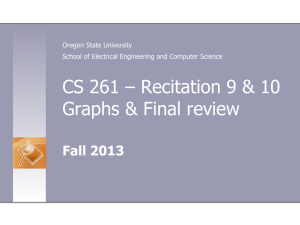How to weigh out Heavy atoms at PSF
advertisement

2013-11-18 16:06 Page 1( 13) Risk assessment How to weigh out toxic and dangerous heavy metals. Produced 2013-01-21 By Martin Moche at Protein Science Facility . Modified 2013-05-31 By Helena Berglund Final risk assessment of the method 1. Acceptable risk 1. State the premises in which the activity is taking place Scheelelaboratoriet, floor 3, A1-315 2. Description of activity How to weigh aliquots of heavy metal salts: 1. Before weighing your compound: Read the material safety data sheet (MSDS) for the compound of interest. - If MSDS data sheet classify your chemical as a CMR compound (Carcinogenic, Mutagenic and Reprotoxic) ask your supervisor/lab manager to be added to the CMR register at PSF. In MSDS the following risk phrases are used regarding CMR compounds: H350: May cause cancer. H340: May cause genetic defects. H360: May damage fertility or the unborn child. R45: May cause cancer. R46: May cause heritable genetic damage. R49: May cause cancer by inhalation. R60: May impair fertility. R61: May cause harm to the unborn child. - Read the point about handling and storage and take particular note about “incompatible materials”, MSDS section 10:5, to avoid creating dangerous mixtures of chemicals. If the MSDS cannot be easily found is next to chemicals and scales - alert the lab manager of the laboratory. 2. Always use the scales in the designated fume hood. 3. Wear lab coat, gloves, eye-protection, long trousers and shoes/boots. 4. Weigh out only the amount you need to use /or that you can weigh out with fair accuracy with the scales at hand. 5. Use an eppendorf tube (or similar) and a clean metal spatula. 6. Is your compound a fine/dusty powder (like e.g. mersalyl acid), or does it say ‘hygroscopic’ on the bottle? In that case, the powder may not be easy to transfer into the eppendorf tube, and would tend to instead stick to the outside of the tube. In those cases, cover first the outside of the tube (including the rim around the opening) with aluminium foil. This should lessen the problem considerably. 7. After weighing, wipe the spatula with first a moist and then a dry paper tissue. Then throw the tissues in the heavy metal bin in the fume hood. The spatula can now be removed from the fume hood. The powder in the tube should be dissolved in the fume hood before closing the tube and removing it from the fume hood. The bottle of heavy metal powder can also be retrieved (if necessary, wipe it first). 8. After the heavy metal solution, heavy metal bottle and spatula have been retrieved; throw away the foil in the heavy metal bin (if foil was used during weighing), then clean the scales and surrounding area with first a moist and then a dry paper tissue. Throw away all paper tissues and finally your gloves in the heavy metal bin. Risk assessment : Metod för att väga upp giftiga och hälsoskadliga tungmetaller. 2013-11-18 16:06 Page 2( 13) 3. Products Product name Concentration Form Quantity Danger Comments Aluminium fluoride trihydrate CLP-legislation H302 , H315 , H319 , H335 P261 , P305 + P351 + P338 Older legislation R22 , R36/37/38 S26 Lists Halogenated substance Biophysics container Ammonium heptamolybdate tetrahydrate CLP-legislation H315 , H319 , H335 P261 , P305 + P351 + P338 Older legislation R36/37/38 S26 Biophysics container Barium chloride dihydrate CLP-legislation H301 , H332 P301 + P310 Older legislation R20 , R25 S45 Lists KI annual use Biophysics container Barium nitrate CLP-legislation H272 , H302 , H332 P220 Older legislation R20/22 , R8 S17 , S28 Biophysics container Cadmium Borate Lists PRIO Database Remark M, AFS 2011:18 Remark C, AFS 2011:18 Biophysics container Cadmium chloride CLP-legislation H301 , H330 , H340 , H350 , H360FD , H372 , H410 P201 , P260 , P273 , P284 , P301 + P310 , P310 Older legislation R25 , R26 , R45 , R46 , R48/23/25 , R50/53 , R60 , R61 S45 , S53 , S60 , S61 Lists PRIO Database Restricted Substances Database Chemsec SIN KI annual use Halogenated substance CMR-substances Remark M, AFS 2011:18 Remark R, AFS 2011:18 Remark C, AFS 2011:18 Cerium(III) sulfate R36/37/38 S26 , S37/39 Cesium chloride Risk assessment : Metod för att väga upp giftiga och hälsoskadliga tungmetaller. Biophysics container Biophysics container Biophysics container 2013-11-18 16:06 Page 3( 13) Cesium chloride container Cobalt(II) nitrate hexahydrate CLP-legislation H317 , H334 , H341 , H350i , H360F , H410 P201 , P273 , P280 , P302 + P352 , P304 + P341 , P308 + P313 Older legislation R42/43 , R49 , R50/53 , R60 , R68 S22 , S36/37 , S45 , S53 , S61 Lists KI annual use CMR-substances Remark H, AFS 2011:18 Remark C, AFS 2011:18 Remark S, AFS 2011:18 Biophysics container Cobalt(II) sulfate heptahydrate CLP-legislation H302 , H317 , H334 , H341 , H350i , H360F , H410 P201 , P281 , P302 + P352 , P304 + P341 , P308 + P313 Older legislation R22 , R42/43 , R49 , R50/53 , R60 , R68 S22 , S35 , S36/37 , S45 , S53 , S61 Lists KI annual use CMR-substances Remark H, AFS 2011:18 Remark C, AFS 2011:18 Remark S, AFS 2011:18 Biophysics container Gadolinium(III) nitrate hexahydrate CLP-legislation H272 , H315 , H319 , H335 P220 , P261 , P305 + P351 + P338 Older legislation R36/37/38 , R8 S17 , S26 , S36/37/39 Biophysics container Biophysics container Gadolinium(III) oxide Gallium chloride Biophysics container R14 , R34 S26 , S27 , S28.1 , S36/37/39 , S45 Biophysics container Gallium(III) oxide Gold(III) chloride CLP-legislation H315 , H319 , H335 P261 , P305 + P351 + P338 Older legislation R36/37/38 S26 , S36 Lists Halogenated substance mg Salt 250 Uppvägning av salt g Salt 25 Uppvägning av salt Hexaamminecobalt(III) chloride CLP-legislation H315 , H319 , H335 P261 , P305 + P351 + P338 Older legislation R36/37/38 S26 Risk assessment : Metod för att väga upp giftiga och hälsoskadliga tungmetaller. 2013-11-18 16:06 Page 4( 13) Hexachloroplatinic(IV) acid CLP-legislation H301 , H314 , H317 , H334 Older legislation R25 , R34 , R42/43 S1/2 , S22 , S26 , S36/37/39 , S45 Lists PRIO Database KI annual use Biophysics container Iridium(III) chloride hydrate R36/37/38 S26 , S36 Lists Halogenated substance Biophysics container Biophysics container Iridium(III) chloride trihydrate Manganese(II) chloride tetrahydrate CLP-legislation H302 , H411 P273 Older legislation R22 , R51/53 S61 Lists KI annual use Biophysics container Mersalyl acid CLP-legislation H300 , H310 , H330 , H373 , H410 P260 , P264 , P273 , P280 , P284 , P301 + P310 Older legislation R26/27/28 , R33 , R50/53 S13 , S28 , S36 , S45 , S60 , S61 Lists PRIO Database Restricted Substances Database KI annual use Remark H, AFS 2011:18 mg Salt 250 Uppvägning av salt Nickel(II) acetate tetrahydrate CLP-legislation H302 , H317 , H332 , H334 , H341 , H350i , H360 , H372 , H410 P201 , P261 , P273 , P280 , P308 + P313 , P501 Older legislation R20/22 , R42/43 , R48/23 , R49 , R50/53 , R61 , R68 S45 , S53 , S60 , S61 Lists Restricted Substances Database KI annual use CMR-substances Biophysics container Nickel(II) chloride hexahydrate CLP-legislation H301 , H315 , H317 , H331 , H334 , H341 , H350i , H360D , H372 , H410 P201 , P261 , P273 , P280 , P301 + P310 , P311 Older legislation R23/25 , R38 , R42/43 , R48/23 , R49 , R50/53 , R61 , R68 S45 , S53 , S60 , S61 Risk assessment : Metod för att väga upp giftiga och hälsoskadliga tungmetaller. Biophysics container 2013-11-18 16:06 Page 5( 13) S45 , S53 , S60 , S61 Lists Restricted Substances Database KI annual use CMR-substances Remark C, AFS 2011:18 Remark S, AFS 2011:18 p-Chloromercuriphenylsulfonic acid monosodium Lists Restricted Substances Database Platinum(IV) chloride R22 , R34 , R42/43 S26 , S27 , S36/37/39 , S45 mg Salt 100 Uppvägning av salt mg Salt 1000 Uppvägning av salt mg Salt 250 Uppvägning av salt mg Salt 1000 Uppvägning av salt Potassium dicyanoaurate(I) CLP-legislation EUH032 , H300 , H310 , H330 , H410 P260 , P264 , P273 , P280 , P284 , P301 + P310 Older legislation R26/27/28 , R32 , R50/53 S28 , S29 , S45 , S60 , S61 , S7 Lists PRIO Database KI annual use Remark H, AFS 2011:18 Potassium gold(III) chloride CLP-legislation H315 , H319 , H335 P261 , P305 + P351 + P338 Older legislation R36/37/38 S26 , S36 Potassium hexacyanoferrate(III) CLP-legislation EUH032 Older legislation R32 Lists Remark H, AFS 2011:18 Biophysics container Potassium osmate(VI) dihydrate CLP-legislation H301 , H311 , H318 , H330 P260 , P280 , P284 , P302 + P352 , P304 + P340 , P305 + P351 + P338 , P310 Older legislation R23/24/25 , R41 S22 , S26 , S36 , S45 Lists KI annual use Biophysics container Potassium tetrachloroplatinate(II) CLP-legislation H301 , H315 , H317 , H318 , H334 P261 , P280 , P302 + P352 , P304 + P341 , P305 + P351 + P338 , P309 + P310 Older legislation R25 , R38 , R41 , R42/43 S22 , S26 , S36/37/39 , S45 Lists PRIO Database KI annual use Halogenated substance Risk assessment : Metod för att väga upp giftiga och hälsoskadliga tungmetaller. Biophysics container 2013-11-18 16:06 Page 6( 13) Potassium tetracyanoplatinate(II) CLP-legislation EUH032 , H300 , H310 , H330 , H410 P260 , P264 , P273 , P284 , P301 + P310 Older legislation R26/27/28 , R32 , R50/53 S28 , S29 , S45 , S60 , S61 , S7 Lists KI annual use mg Salt 1000 Uppvägning av salt Biophysics container Rhodium(III) chloride R22 Biophysics container Samarium(III) acetate hydrate Sodium fluoride CLP-legislation EUH032 , H301 , H315 , H319 P305 + P351 + P338 Older legislation R25 , R32 , R36/38 S22 , S36 , S45 Lists KI annual use Biophysics container Sodium hexachloroiridate(IV) hexahydrate CLP-legislation H301 , H311 , H331 P261 , P280 , P301 + P310 , P311 Older legislation R23/24/25 S27 , S28 , S36/37/39 , S45 Lists KI annual use Biophysics container Sodium metavanadate CLP-legislation H301 , H315 , H319 , H335 P261 , P301 + P310 , P305 + P351 + P338 Older legislation R25 , R36/37/38 S26 , S36/37/39 , S45 Lists KI annual use g Salt 25 Uppvägning av salt Sodium molybdate CLP-legislation H315 , H319 , H332 , H335 P261 , P305 + P351 + P338 Older legislation R36/37/38 S26 , S36 Sodium molybdate dihydrate Biophysics container Biophysics container Sodium sulfide nonahydrate CLP-legislation EUH031 , H302 , H311 , H314 , H400 P233 , P273 , P280 , P301 + P330 + P331 , P305 + P351 + P338 , P310 Older legislation R31 , R34 , R50 S26 , S29 , S45 , S61 Lists KI annual use Risk assessment : Metod för att väga upp giftiga och hälsoskadliga tungmetaller. Biophysics container 2013-11-18 16:06 Page 7( 13) Sodium tungstate dihydrate CLP-legislation H302 Older legislation R22 S36 Biophysics container Strontium carbonate Biophysics container Strontium chloride hexahydrate CLP-legislation H302 , H318 P280 , P305 + P351 + P338 Older legislation R22 , R41 S26 , S39 Biophysics container Tin(II) chloride CLP-legislation H302 , H314 , H315 , H317 , H319 , H335 P280 , P302 + P352 , P304 + P340 , P305 + P351 + P338 , P310 Older legislation R22 , R34 , R36/37/38 , R43 S24 , S26 , S36/37/39 , S45 Ytterbium(III) chloride hexahydrate R36/37/38 S26 , S36 Own mixtures Product name Concentration Form Quantity Danger Comments Hazard statements EUH031 Contact with acids liberates toxic gas. EUH032 Contact with acids liberates very toxic gas. H272 May intensify fire; oxidiser. H300 Fatal if swallowed. H301 Toxic if swallowed. H302 Harmful if swallowed. H310 Fatal in contact with skin. H311 Toxic in contact with skin. H314 Causes severe skin burns and eye damage. H315 Causes skin irritation. H317 May cause an allergic skin reaction. H318 Causes serious eye damage. H319 Causes serious eye irritation. H330 Fatal if inhaled. H331 Toxic if inhaled. H332 Harmful if inhaled. H334 May cause allergy or asthma symptoms or breathing difficulties if inhaled. H335 May cause respiratory irritation. H340 May cause genetic defects . H341 Suspected of causing genetic defects . H350 May cause cancer . Risk assessment : Metod för att väga upp giftiga och hälsoskadliga tungmetaller. Biophysics container Biophysics container 2013-11-18 16:06 Page 8( 13) H350i May cause cancer by inhalation. H360 May damage fertility or the unborn child . H360D May damage the unborn child. H360F May damage fertility. H360FD May damage fertility. May damage the unborn child. H372 Causes damage to organs through prolonged or repeated exposure . H373 May cause damage to organs through prolonged or repeated exposure . H400 Very toxic to aquatic life. H410 Very toxic to aquatic life with long lasting effects. H411 Toxic to aquatic life with long lasting effects. Precautionary statements P201 Obtain special instructions before use. P220 Keep/Store away from clothing/…/combustible materials. OBSERVE! This precautionary statement has to be specified by the supplier. See the Material Safety Data Sheet for the exact formulation. P233 Keep container tightly closed. P260 Do not breathe dust/fume/gas/mist/vapours/spray. OBSERVE! This precautionary statement has to be specified by the supplier. See the Material Safety Data Sheet for the exact formulation. P261 Avoid breathing dust/fume/gas/mist/vapours/spray. OBSERVE! This precautionary statement has to be specified by the supplier. See the Material Safety Data Sheet for the exact formulation. P264 Wash … thoroughly after handling. OBSERVE! This precautionary statement has to be specified by the supplier. See the Material Safety Data Sheet for the exact formulation. P273 Avoid release to the environment. P280 Wear protective gloves/protective clothing/eye protection/face protection. OBSERVE! This precautionary statement has to be specified by the supplier. See the Material Safety Data Sheet for the exact formulation P281 Use personal protective equipment as required. P284 Wear respiratory protection. OBSERVE! This precautionary statement has to be specified by the supplier. See the Material Safety Data Sheet for the exact formulation. P301 + P310 IF SWALLOWED: Immediately call a POISON CENTER or doctor/physician. P301 + P330 + P331 IF SWALLOWED: rinse mouth. Do NOT induce vomiting. P302 + P352 IF ON SKIN: Wash with plenty of soap and water. P304 + P340 IF INHALED: Remove victim to fresh air and keep at rest in a position comfortable for breathing P304 + P341 IF INHALED: If breathing is difficult, remove victim to fresh air and keep at rest in a position comfortable for breathing. P305 + P351 + P338 IF IN EYES: Rinse cautiously with water for several minutes. Remove contact lenses, if present and easy to do. Continue rinsing. P308 + P313 IF exposed or concerned: Get medical advice/attention. P309 + P310 IF exposed or if you feel unwell: Immediately call a POISON CENTER or doctor/physician. P310 Immediately call a POISON CENTER or doctor/physician. P311 Call a POISON CENTER or doctor/physician. P501 Dispose of contents/container to … OBSERVE! This precautionary statement has to be specified by the supplier. See the Material Safety Data Sheet for the exact formulation. Risk phrases R14 Reacts violently with water. R20 Harmful by inhalation. R20/22 Harmful by inhalation and if swallowed. R22 Harmful if swallowed. R23/24/25 Toxic by inhalation, in contact with skin and if swallowed. R23/25 Toxic by inhalation and if swallowed. R25 Toxic if swallowed. R26 Very toxic by inhalation. R26/27/28 Very toxic by inhalation, in contact with skin and if swallowed. R31 Contact with acids liberates toxic gas. Risk assessment : Metod för att väga upp giftiga och hälsoskadliga tungmetaller. 2013-11-18 16:06 Page 9( 13) R32 Contact with acids liberates very toxic gas. R33 Danger of cumulative effects. R34 Causes burns. R36/37/38 Irritating to eyes, respiratory system and skin. R36/38 Irritating to eyes and skin. R38 Irritating to skin. R41 Risk of serious damage to eyes. R42/43 May cause sensitisation by inhalation and skin contact. R43 May cause sensitisation by skin contact. R45 May cause cancer. R46 May cause heritable genetic damage. R48/23 Toxic: Danger of serious damage to health by prolonged exposure through inhalation. R48/23/25 Toxic: Danger of serious damage to health by prolonged exposure through inhalation and if swallowed. R49 May cause cancer by inhalation. R50 Very toxic to aquatic organisms. R50/53 Very toxic to aquatic organisms, may cause long-term adverse effects in the aquatic environment. R51/53 Toxic to aquatic organisms, may cause long-term adverse effects in the aquatic environment. R60 May impair fertility. R61 May cause harm to the unborn child. R68 Possible risk of irreversible effects. R8 Contact with combustible material may cause fire. Safety advice phrases S1/2 Keep locked up and out of the reach of children S13 Keep away from food, drink and animal feedingstuffs S17 Keep away from combustible material S22 Do not breathe dust S24 Avoid contact with skin S26 In case of contact with eyes, rinse immediately with plenty of water and seek medical advice S27 Take off immediately all contaminated clothing S28 After contact with skin, wash immediately with plenty of ... (to be specified by the manufacturer) S28.1 After contact with skin, wash immediately with plenty of water S29 Do not empty into drain S35 This material and its container must be disposed of in a safe way S36 Wear suitable protective clothing S36/37 Wear suitable protective clothing and gloves S36/37/39 Wear suitable protective clothing, gloves and eye/face protection S37/39 Wear suitable gloves and eye/face protection S39 Wear eye/face protection S45 In case of accident or if you feel unwell, seek medical advise immediately. Show the label where possible S53 Avoid exposure - obtain special instructions before use S60 This material and its container must be disposed of as hazardous waste S61 Avoid release to the environment. Refer to special instructions/Safety data sheets S7 Keep container tightly closed 4. Chemicals inherent risk Risk assessment : Metod för att väga upp giftiga och hälsoskadliga tungmetaller. 2013-11-18 16:06 Page 10( 13) a:Very high risk 5. Level of exposure Low 6. Ventilation Level of protection 2 - ventilated hood 7. Biological material Not applicable 8. Comments on Biological material 9. Possible interacting effects and reactions. 10. Comments on Possible interacting effects and reactions MSDS Section 10:5 Incompatible materials In Summary: Do not mix heavy atom solutions with: Strong oxidizing agents, Strong acids, Strong bases, Ammonia, Amines The nitrate compunds are oxidising: - Cobalt(II) nitrate hexahydrate - Gadolinium(III) nitrate hexahydrate - Barium Nitrat and should NOT be mixed with other heavy metal compounds. Ammonium molybdate should not be mixed with heavy metals. To avoid mixing of nitrate compounds and Ammonium molybdate with heavy metals in the paper and plastics waste container - we should make a separate waste container for oxidising compounds. Alternatively we could throw these compounds. 11. Requirements regarding premises and equipment in premises Ventilation 12. Comments on Requirements regarding premises and equipment in premises Fume hood is required for weighting of heavy metal compounds. 13. Specification of storage Ventilated cabinet 14. Comments to Specification of storage Next to the fume hood we have a ventilated metal cupboard where heavy metal salts are stored. Risk assessment : Metod för att väga upp giftiga och hälsoskadliga tungmetaller. 2013-11-18 16:06 Page 11( 13) 15. Do not store together with Acid , Base , Alcohol , Oxidizing material , Flammable material 16. Comments on Do not store together with MSDS Section 7.2 Conditions for safe storage, including any incompatibilities In Summary: Store in cool place. Keep container tightly closed in a dry and well-ventilated place. More specific info for certain compounds: Light sensitive. Air and moisture sensitive. Handle and store under inert gas: - Gold(III) chloride Never allow product to get in contact with water during storage. Do not store near acids: - Potassium dicyanoaurate(I) Never allow product to get in contact with water during storage. Do not store near acids. Handle and store under inert gas. Hygroscopic: - Potassium tetracyanoplatinate Store under inert gas. Hygroscopic: - Gadolinium (III) oxide - Gallium(III) chloride - Tin(II) chloride 17. Requirements regarding protective signs Chemicals 18. Commets on Requirements regarding protective signs 19. Personal protective equipment Protective glasses , Protective gloves , Protective clothing , Protective shoes 20. Comments on Personal protective equipment Handle with gloves. Gloves must be inspected prior to use. Use proper glove removal technique (without touching glove 21. Describe the technical equipment 22. Environment Not applicable 23. Comments on Environment 24. Waste management Risk assessment : Metod för att väga upp giftiga och hälsoskadliga tungmetaller. 2013-11-18 16:06 Page 12( 13) Chemical waste 25. Comments on Waste management Paper tissue and gloves contaminated with heavy atoms are placed bucket bins in the fume hood. There is one bin for mercury paper and gloves and another bin for gold/platinum/lead etc Small plastic eppendorf/falcon tubes with solutions should remain CLOSED when collected in plastic flasks with screw stoppers and again mercury is separated out from other heavy metal solutions. 26. First aid and readiness to accident, fire and overflow Eyewash , Absorbing substance , Other 27. Comments on First aid and readiness to accident, fire and overflow Instructions for chemical spill cleaning from Stena, full-face filter mask for air protection and a complete suit protecting against chemicals, vermiculit absorbant, gloves, boots etc. are available in the end of the corridor at PSF floor 3. Spill of 1-100 gram chemicals can be handled using the protective equipment above. In case of an accident please contact Martin Moche or Helena Berglund at: Martin.Moche@ki.se, 073-3229327, 08-52486843 Helena.Berglund@ki.se, 070-6014289, 08-52486843 28. Hazardous actions Transference betw vessels , Blending , Weighing , Ventilation failure , Solitary work , Night work 29. Comments on Hazardous actions Weighing of heavy metals should be done daytime in case of an accident where help is needed. 30. Special instructions to other personel 31. Final risk assessment of the method 1. Acceptable risk 32. Comments on Final risk assessment and additional risk reducing measurements 33. Participants in the assessment Esben Quistgaard (MBB/Biophysics) wrote the "Desription of activity" while Martin Moche (MBB/PSF) translated and made the KLARA documentation. Signature Supervisor Date Risk assessment : Metod för att väga upp giftiga och hälsoskadliga tungmetaller. 2013-11-18 16:06 Page 13( 13) Helena Berglund Date of reassessment: Risk assessment : Metod för att väga upp giftiga och hälsoskadliga tungmetaller.







